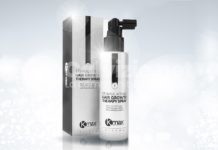Author :Wilt TJ ; MacDonald R ; Ishani A
Address: The VA Coordinating Center of the Cochrane Collaborative Review Group in Prostatic Diseases and Urologic Malignancies, 13/Minneapolis, VA, USA.
Source BJU Int, 83(9):976-83 1999 Jun
Abstract OBJECTIVES: To conduct a systematic review of the evidence for the efficacy of beta-sitosterol in men with symptomatic benign prostatic hyperplasia (BPH). METHODS: Studies were identified through Medlinetrade mark (1966-98), EMBASEtrade mark, Phytodok, the Cochrane Library, bibliographies of identified trials and review articles, and contact with study authors and pharmaceutical companies. Randomized trials were included if: men had symptomatic BPH; plant extract preparations contained beta-sitosterols; a control group received placebo or a pharmacological therapy; and treatment duration was >/=30 days. Study characteristics, demographic information, enrolment criteria and outcomes were extracted. RESULTS: Four trials comprising a total of 519 men met the inclusion criteria. All were double-blind and lasted 4-26 weeks. Three studies used nonglucosidic beta-sitosterols and one used a preparation that contained only beta-sitosterol-beta-d-glucoside. Compared with placebo, beta-sitosterol improved urinary symptom scores and flow measures. For the two studies reporting the International Prostate Symptom Score (IPSS), the weighted mean difference (WMD) against placebo was ?4.9 IPSS points (95% confidence interval, CI,-6.3 to-3.5). The WMD for peak urinary flow rate was 3.91 mL/s (95% CI 0.91 to 6.90, four studies) and for residual volume the WMD was ?28.62 mL (95% CI-41.42 to-15.83, four studies). Beta-sitosterol did not reduce prostate size. The trial using pure beta-sitosterol-beta-d-glucoside (WA184) showed no improvement in urinary flow measures. Withdrawal rates for men assigned to beta-sitosterol and placebo were 7.8% and 8.0% (not significant), respectively.
CONCLUSION: beta-sitosterol improves urological symptoms and flow measures. However, the existing studies are limited by short treatment duration and lack of standardized beta-sitosterol preparations. Their long-term effectiveness, safety and ability to prevent the complications of BPH are unknown.






























